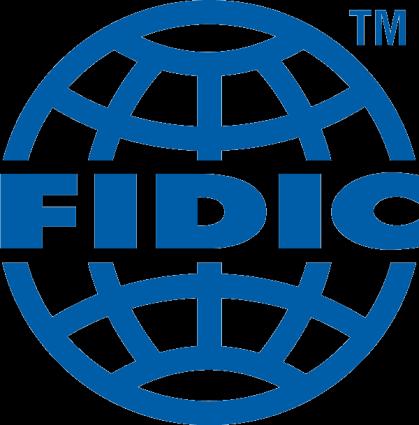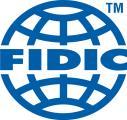



Mike Haigh
President and CEO Ramboll Group
Sustainable Infrastructure Advisor
Former Executive Chair of Mott MacDonald








Mike Haigh
President and CEO Ramboll Group
Sustainable Infrastructure Advisor
Former Executive Chair of Mott MacDonald




Science is telling us that the window for influencing the future climate is rapidly closing.
We've set ambitious goals, invested in renewables and adopted cleaner technologies… but progress is too slow.
Infrastructure is responsible for over 70% of carbon emissions globally!
Nevertheless, carbon effectiveness in infrastructure is mostly not considered.





Our industry is part of the problem
… and part of the solution!




Our clients don’t understand and don’t evaluate good carbon management
At the end, cost is what counts the most Low carbon infrastructure is only feasible in wealthy nations




influence we can As engineering firms we can’t really influence stakeholder requirements




if we collaborate as an industry influence we can



















Many organisations now actively engaged...but we need more!
Governance established




Carbon Management Framework drafted
Finalising, testing and validating globally for everyone’s use



+ supporting members


















Many organisations now actively engaged...but we need more!

Governance established





Carbon Management Framework drafted
Finalising, testing and validating globally for everyone’s use




Applies to any project in any geography
Measure and improve
Influence and advocate change
Define what good looks like –built on existing good practice
Applies to any project delivery stage
Influence different stakeholders in the value chain
Carbon Management Framework used consistently across industry Links to existing good practices




A white paper with a short shelf life.
A detailed step by step process.
An attempt to replace accepted and applied standards (e.g. PAS 2080).
It’s an ongoing program.
It’s a guidance with clear requirements and maturity criteria.
It’s a framework what these should contain.
A one-size-fits-all best practice.
The next CSRD reporting.
It’s a guidance for different levels of maturity of stakeholders and constituencies.
It’s a vehicle to share best practice.




Phase 1 By December 2024
Establish the FIDIC Carbon Management Framework (CMF)
Phase 2
From October 2024 and ongoing
Communication and Commitment
Testing the CMF
Stakeholder engagement
Phase 3 2025 and ongoing
Monitoring, Developing, Reporting
Developing Carbon Database



Whole Life Carbon Awareness

Continual improvement
Whole Life Carbon Assessment
Baseline and Targets Procurement
Leadership / accountability Collaboration
Decision-making for whole life carbon reductions




Basic carbon awareness
Understanding basic decarbonisation issues and relevance to projects in the built environment
Understanding the carbon impact of a project
Aiming to create a carbon reduction mindset in project delivery teams
Systematically challenging a project’s carbon emissions, starting to implement whole life carbon reduction opportunities collaboratively and communicating any barriers
Developing and delivering projects with whole life carbon reduction central to a project’s outcomes and delivery model
Developing projects that align to wider system / national carbon reduction targets Focusing on projects enabling decarbonising wider system and other co-benefits such as
and circularity




• Capital, operational, user carbon
• Carbon linked to activities
• High-level carbon estimate for capital and/or operational carbon based on basic design activities
• As early as possible
• Using assessment outputs to understand carbon hotspots
• Carbon reduction ideas generated by the project team
• Project team understands carbon impact and starts generating initial reduction ideas
• Carbon hotspots and reduction ideas disclosed and included in existing design team and client conversations / meetings
• Basic process for understanding where the carbon is in a project and initial engagement for reduction ideas shared with other project teams for future learning




FAQ Level 1:
What is embodied (or capital) carbon, and why is it important to assess at the early stages of an infrastructure project?
Answer:
Embodied carbon, also known as capital carbon, represents the total greenhouse gas emissions and removals associated with the extraction, processing and transportation of materials, as well as from construction activities and processes.
It covers all of these aspects for the whole life of an asset, not just its initial creation. This means that it includes emissions related to the maintenance, refurbishment, and eventual disposal of the asset at the end of its life
Early assessment allows design teams to:
• Understand where the greatest carbon hotspots are in a project
• Focus their carbon reduction efforts and unlock innovations in materials selection and construction methods
• Identify cost-saving opportunities,
• Communicate carbon management to stakeholders,
• Gather and share data for future projects and benchmarks
Reference case:
By understanding where the embodied carbon is in a bridges, a project team can identify innovations in the materials selection and construction methods applied. These measures if implemented could show potential embodied carbon reductions of approximately 40-60%.
"Sustainability Optimization of Motorway Bridges", The Danish Road Directorate
Links for useful information:
• UKGBC 'Operational & Embodied Carbon Explainer Guide'
• World Green Building Council 'Bringing Embodied Carbon Upfront'
• IStructE 'A brief guide to calculating embodied carbon’
• ICE, CESMM4 Carbon and Price Book, 2013




Variants
Embodied carbon savings compared to BRIDGE original design, (%)
webs 5 webs
3 webs 3-5 webs+ new end support 4 webs, monolithic 5 webs, nonpressed
webs, nonpressed, monolithic
webs, reduced load




Answer:
Assessing whole life carbon at project level is very useful for project teams to identify where the capital and operational carbon hotspots are (being concrete, steel, energy, chemicals) and focus their efforts to reduce the carbon through good design practices.
How can carbon assessment at the programme level help a client gain insights of the carbon hotspots and engage with the right stakeholders to achieve deeper carbon reductions?
However,, it is equally important to take a more systematic view to carbon management at the programme level. Many clients together with their consultants and contractors are trying to assess whole life carbon hotspots at programme level across multi-billion $ infrastructure programmes – being in transport, water or other sectors.
Capital and operational carbon hotspots at programme level can be identified using top-down assessment approaches based on asset types, high-level quantities of fuels and operational energy requirements across a programme.
A programme level view of whole life carbon emissions can allow a client to have more strategic engagement with key stakeholders involved to reduce carbon more cost effectively for common assets across the programme. These can be engaging with product/material suppliers to identify alternative lower carbon concrete mixes, low carbon steel, road pavement materials, plan the right alternative renewable energy sources across the programme, being solar, biogas, wind, hydrogen or identifying alternative materials for products such as pipelines, tanks and others. There will be other important opportunities that are project/site specific to avoid building new assets, which will require a project specific carbon challenge, but a programme level view will still provide benefits.
Reference case:
Water utility in New Zealand Watercare assessed the carbon emissions of their 10 year investment programme. Their major carbon hotspots were in capital carbon since the electricity grid in New Zealand is largely decarbonised. The programme level capital carbon baseline allowed Watercare to strategically engage with their major suppliers and collaborate to identify lower carbon alternatives to be implemented in projects (Reference below)
Links for useful information:
• Infrastructure Carbon Review 7 years on review, Good progress but not fast enough –Watercare case study found on page 40.
• Watercare climate change summary 2023




How can carbon management be integrated in a project’s procurement process to help accelerate carbon reductions and unlock further innovations?
Answer: Procurement can be a powerful lever to accelerate carbon reduction in projects and unlock further innovations.
Through setting a clear carbon reduction target in a project’s contract documents as well as applying further incentives (when the project’s carbon data is mature) that reward the supply chain when meeting or exceeding the project’s carbon target but also penalise bad carbon performance, a client can:
• Have greater certainty that the project will meet and most likely exceed its carbon reduction target
• Enable the right collaborative behaviours in the supply chain through different contract packages and make carbon management central to the project’s performance
• Facilitate wider industry innovations that can be the benchmark of future good practices
Reference case:
The UK Lower Thames Crossing project procurement process in 2023 has been designed to set a carbon limit, for each of the three design and build contracts, consistent with the project’s carbon reduction target and data. Contractors will be contractually required to not exceed their carbon limit. The limit (or target) has been set to represent current best practice for concrete, steel and construction fuels and methods. Contractors are incentivised and penalised for their carbon performance. This helps collaboration and focusing on low carbon innovations to beat the target.
Links for useful information:
• PAS 2080: Carbon Management in Infrastructure and Built Environment
• Lower Thames Crossing Carbon Management Plan submitted to the UK Government
• NEC X29 Climate Change clause
• The Chancery Lane Project - examples of clauses, e.g. Tristan's clause on procuring materials and carbon budgets




FAQ Level 4
How do we plan and prioritize infrastructure projects in line with national and/or global carbon budgets?
Answer:
We need to recognise that the majority of the carbon emitted is from the users of the infrastructure. For example, the emissions from the petrol in our cars, the use of electricity from power stations operating with fossil fuels, etc. The way our existing infrastructure systems are built and operated dictate these and lock in high carbon user behaviours. Transforming these high carbon systems within the time available and available remaining carbon budgets requires providing the infrastructure that will drastically change the user behaviours fast. This must include Nature-basedSolutions performing infrastructure functions, also safeguarding land for Nature to thrive.
Global and national carbon budgets should be apportioned between economic sectors at regional / national level. But all the capital carbon invested for new projects must result in the complete decarbonisation of the infrastructure systems within the region.
Note for clients, consultants, investors, planners and other policy makers: Understanding how an individual project or a group of projects align with regional, national or global carbon budgets/targets is something that we all need to start promoting in our industry. Currently there is no formal way of making infrastructure planning (new and existing) in a more integrated way and test whether a project’s whole life carbon emissions is within any regional, national or global budgets.
Addressing such gap in our planning systems will require a more strategic dialogue between policy makers, infrastructure clients, investors and the supply chain




Our strength is in our knowledge, and in our numbers.
Let’s continue to leverage the power of our collective punch and continue to work together to accelerate the progress in decarbonizing infrastructure.




Phase 1 By December 2024
Establish the FIDIC Carbon Management Framework (CMF)
Phase 2
From October 2024 and ongoing
Communication and Commitment
Testing the CMF
Stakeholder engagement
Phase 3 2025 and ongoing
Monitoring, Developing, Reporting
Developing Carbon Database








Question 1
What is your commitment level to the Carbon Collaboration Initiative?

• All in
• Interested but need to take it back to my organisation
• Not sure
• Not important for me
Question 2
Want to join? - Please add your contact info if you would like to be part of testing or implementing this.
• Open text – results will not be shown on screen


